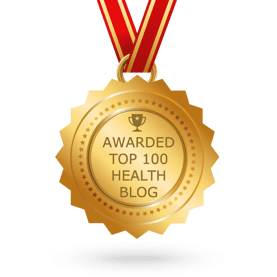 Ragweed, and the Ragweed Family
Ragweed, and the Ragweed Family
Fall allergies appear in August as people start sneezing from ragweed and other weeds. A ragweed allergy is also known as hay fever. The drier the weather, the worse the pollen count. Ragweed allergies usually peak in September as one plant can produce one billion grains of pollen! So, just when you want to enjoy an outdoor hike or plant some mums, ragweed allergy symptoms can make you miserable. The symptoms of allergies include sneezing, itchy eyes/nose/throat, nasal congestion, post nasal drainage, headache, rash, even fatigue or lack of energy.
Some people with a ragweed allergy can also experience problems with certain foods or teas such as echinacea or chamomile. Many plants that are in the same family can often produce allergic reactions due to overlap in their chemical composition. A very good example of this is the Asteraceae family which includes ragweeds, a cause of roughly 50% of the all of the cases of allergic rhinitis is the U.S. Chamomile comes from the same family as ragweed and can cause similar allergic symptoms in those with ragweed allergy, so it is best to avoid this tea. (See "Why Chamomile and Echinacea May Not Be Good For You")
As we move later into fall, mold allergies can be experienced from mid-September until November, and then may subside as the cold weather starts.
Mold Allergies
The function of mold in nature is to digest organic matter like leaves, and return the leaves back to earth. For people who are sensitive to mold, the Washington D.C. region is a problem because the water level is high. A high water level encourages growth of mold in basements and damp environments.
What grows mold is moisture in walls, carpet, basements, bathrooms, leaky pipes, dehumidifier pan, water leaks, or wherever water accumulates. You may not see it, but should inspect your living area and correct any moisture problems immediately. Replacing carpet with hardwood floors, fixing leaky pipes, using a vacuum with a hepa filter, changing your furnace filter, and having proper ventilation in bathrooms are all helpful in addressing mold allergies.
It is helpful to know specifically what you are dealing with. I may recommend the use of mold plates in your home or office to see where mold colonies grow. The mold plates are easy to order and set up in an area. You can test for many different molds that in the past I have found in homes by using culture plates. Testing is more reliable if the different molds are tested separately. Treatment is based on the findings.
Once you identify the moisture source it can be fixed, and a source of mold eliminated. There may be several different sources of mold and a patient can improve tremendously as we slowly identify and correct each mold problem over the course of months with allergy treatment.
Health conditions that may be mold related in addition to typical allergic rhinitis are irritable bowel, ulcerative colitis, and interstitial colitis. These conditions may improve after treatment for mold allergies, pollen, dust and food sensitivities.
Fall Allergy Treatment
Allergy testing and treatment for ragweed or mold allergies can be done easily using a needle free, non-invasive approach. I would suggest testing for an allergy to ragweed and various members of the Asteraceae family, and mold prior to beginning any desensitization programs. Often, eliminating the allergy to ragweed can decrease the likelihood of reacting to other members of the same plant family.
Once we test, then we can treat using oral immunotherapy which is finding the neutralizing dose of allergy serum. The neutralizing dose becomes stronger with repetitive doses of serum. As the serum gets stronger, the patient gets relief as allergy symptoms usually subside over a period of months.
It is possible to desensitize a person to the Asteraceae family or molds using various natural methods including auricular acupuncture, gut healing protocols, and even stress reduction techniques to help calm the system. Strengthening the immune system with a high quality diet of fresh vegetables and good quality protein, and drinking lots of filtered water will help to reduce inflammation as the body reacts to the allergen.
 Autumn Frandsen N.D. is a Naturopathic Physician at National Integrated Health Associates, NIHA, serving Washington D.C., Maryland and Virginia. As a naturopath, her philosophy is to use the least invasive and effective method to bring balance to the body and restore health. Her areas of focus include Allergies, Environmental Medicine and Chemical Sensitivities, Homeopathy and Herbal Medicine, Heavy Metal Detoxification, and Anti-Aging.
Autumn Frandsen N.D. is a Naturopathic Physician at National Integrated Health Associates, NIHA, serving Washington D.C., Maryland and Virginia. As a naturopath, her philosophy is to use the least invasive and effective method to bring balance to the body and restore health. Her areas of focus include Allergies, Environmental Medicine and Chemical Sensitivities, Homeopathy and Herbal Medicine, Heavy Metal Detoxification, and Anti-Aging.
.png?width=305&height=132&name=NIHAlogoBLUE_3_transparent%20(2).png)

